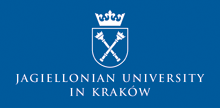Speaker
Description
During the positron emission tomography about 40% of positrons annihilations occur through the creation of positronium which may be trapped within and between molecules. Positronium decays in the patient body are sensitive to the nanostructure and metabolism of the tissues. This phenomenon is not used in the present PET diagnostics, yet it is in principle possible to use environment modified properties of positronium as diagnostic biomarkers for cancer therapy. First in-vitro studies show differences of positronium mean lifetime and production probability in the healthy and cancerous tissues, indicating that they may be used as indicators for in-vivo cancer classification. Here we present a method of positronium lifetime imaging in which the lifetime and position of positronium atoms is determined on an event-by-event basis. The method requires application of β+ decaying isotope emitting prompt gamma (e.g. 44Sc). We discuss the possibility of determining the time and position of positronium annihilation based on the three photons originating from the decays of ortho-positronium in the free intramolecular spaces as well as based on the back-to-back photons originating from the interaction of positronium with the surrounding atoms and bio-active molecules. The prompt gamma is used for the determination of the time of the formation of positronium. We estimate that with the total-body PET scanners the sensitivity of the positronium lifetime imaging, which requires coincident registration of the back-to-back annihilation photons and the prompt gamma is comparable to the sensitivities for the metabolic imaging with standard PET scanners.
References:
[1] P. Moskal et al., Phys. Med. Biol. 64 (2019) 055017
[2] P. Moskal, B. Jasinska, E. Stepien, S. Bass, Nature Physics Review, invited comment, in print
[3] P. Moskal et al., U.S. Patent US 9,851,456 (2017), PL 227658 (2013)

